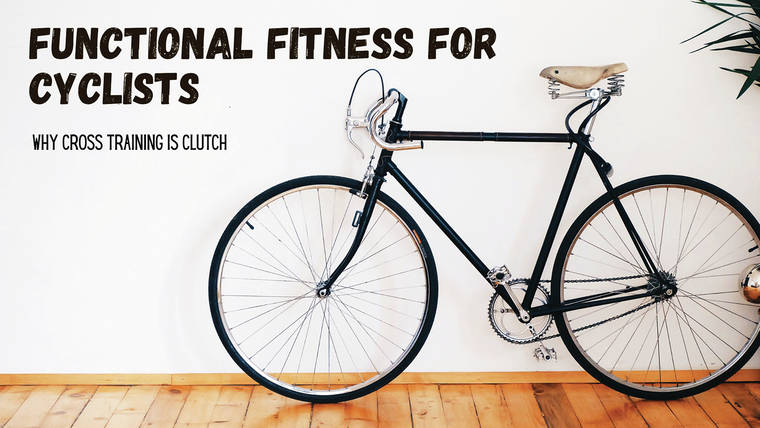Cycling is a fantastic workout for the cardiorespiratory system and the major muscular movers of the lower body. It demands a strong core to stabilize and protect the spine. Road cycling (riding a drop-bar bike on pavement) is enjoyed by serious competitors and weekend warriors alike. Like with any sport that involves repetitive movement and fixed posture, however, it’s really important to incorporate functional exercise into the weekly routine.
While cycling is really great at strengthening certain muscles, other muscles are often neglected. One example of this imbalance is strong quadriceps and weak abdominals. Cyclists should be concerned with overuse injuries, force output imbalances, (one weak muscle inhibiting the force output capacity of the whole muscle group) and joint inflexibility caused by limited range of motion on a road bike.
Let’s address some basic needs of the recreational road cyclist and how cross training can change the game. Every athlete is different, and if you want personalized programming to improve your pedaling power and prevent injuries, I suggest working one on one with an athletic trainer.
Your body on a bike
The position of your body on a drop-bar road bike creates efficiency for producing power, but it extends the hip a lot less than other exercises. Since you are repeating a motion over and over in a limited range, the hamstrings can be tight as a result. To balance out the kinetic chain, add exercises into your routine that build strength in the power sources of pedaling, while taking the hips through a bigger range of motion. This will help avoid injuries and muscular imbalances. Time to do those lunges, squats, and bridges! Targeted flexibility work for the hip flexors is important too, since the hips are flexed more than extended on a bike. Tight/weak hip flexors also inhibit the glutes, which is no bueno, since the glutes are powerful movers in cycling! Many cyclists have poor relationships between the hip flexors and glutes. To address this, add stretches that increase mobility in the hip flexors and strengthen the glutes. Show them how to work together, rekindle the love they once had…well, I mean, do more bridges!
The deeper leaning position can heap stress on the low back and shoulders if the abdominal muscles are not strong enough to stabilize and transfer force. I’m not talking about “six pack” abs, even though we love those. I mean the intrinsic core musculature, the obliques, and the muscles that directly support the vertebrae; the erector spinae. If the core muscles are too weak to stabilize your back and pelvis, other muscles will try to assist, even if the stress overloads them. Add exercises to your routine that require trunk stabilization while the legs are moving. Mountain climbers are a great example, and can be modified for any fitness level.
Getting to peak
If you are a seasoned cyclist who is looking to increase your performance a bit, one way to do this is by increasing the power output throughout the pedal stroke. Most of the power output in road cycling is done on the downward phase of the pedal stroke, and pulling upward intentionally is pretty much an energy waste. There is an opportunity to increase efficiency, however, by scraping and pulling at the top and bottom of the pedal stroke. This movement almost resembles scraping gum off the bottom of your shoe at the bottom of the stroke, and kicking a soccer ball straight forward at the top. It engages different muscles and can give you a more powerful pedal stroke. Besides practicing this in the saddle, you can also build strength in this movement at the gym. Try standing knee flexion/extension as well as standing hip extensions using a cable machine.
Knee pain is a common complaint for cyclists, and is largely due to poor bike fit. If you are experiencing pain or discomfort in the knees, consider having an experienced fit technician assess and set the bike up properly for your body and riding style.
•••
Cynthia Fowler is a certified personal trainer (NASM), corrective-exercise specialist (NASM), registered vinyasa yoga teacher (RYT 200), certified Enhance fitness teacher, group-exercise instructor (TRX, indoor cycling, HIIT, SMR, etc), owner of FoundationUp Fitness, blogger and health coach. Cynthia can be contacted through her website at foundationupfitness.com or directly at Cynthia@fullyfreely.com.


